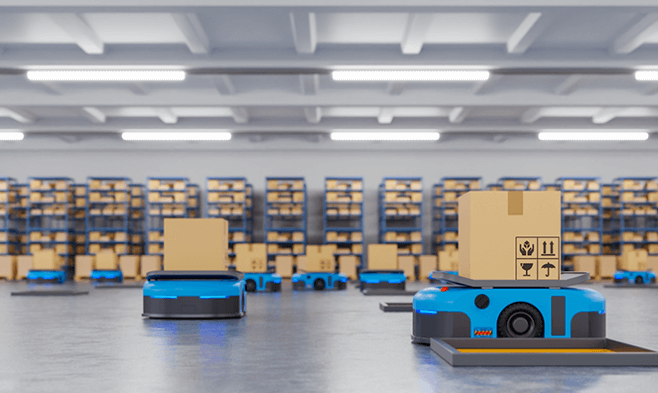It’s time to accept new technologies in warehousing
Technological advancements are generating impactful enhancements in all sectors. Warehouse management is no different in this aspect. In fact, the future possibilities in the warehouse solution are increasingly exciting and highly desirable. In this article, we will show what’s in store for the warehouse industry in the coming next decade? So sit back and read on.
IoT Inspired Smart Warehouses
The Internet of Things is already generating its ripples in every sphere of our planet. When it comes to warehouses, the adoption of IoT has helped businesses to meet the ever-growing need of the customers efficiently. It wouldn’t be wrong to say that IoT has taken warehouse and inventory management to its next level.
From streamlining the warehouse functions to cheaper, controlled and, faster supply chain management, predictive maintenance to real-time product location data, IoT can boost warehouse operations in multiple ways. The best part is this disruptive technology will become even more affordable and readily available in the years come. This would encourage warehouses around the globe to adopt IoT-based connectivity.
Various warehouse and e-Commerce giants have already implemented IoT technologies for improved inventory and warehouse management. Ocado, Amazon, and Alibaba are a few to name who have heavily invested in smart and automated warehouses. IoT is the best thing to have happened to the Warehouse industry. Care to agree?

Automation of Warehouses through artificial intelligence
By 2030, most operations in supply chain industries are expected to be automated. The warehouse industry involved a massive number of repetitive tasks. Artificial intelligence can automate these tasks and enhance productivity and engage workers towards more important tasks. AI is extremely useful for data processing and mining. The data collected from the warehouses will enable ease in adapting to the dynamically changing technological advancement hence proving to be a great scope for better and improved strategies. This simply means that AI will enhance forecasting and help in better decision-making.
AI is penetrating this industry as chatbots for customer support, robots for picking, storage, etc. and predicting patterns to stay prepared in tricky times. Zappos, Ocado, Coca Cola’s EMEA are some famous examples of successful implementation of automation in warehouses.
| Read more: Tips to buy pallet racking system
A Few Emerging trends in the Warehouse Industry
On-demand Warehousing
The on-demand platform is finding its place in warehousing as well. Just as you would want to order food or a taxi using an app that gets your needs fulfilled right at your doorstep, warehousing can also be done on-demand. Using an app warehouse owners can now lease the space and capacity that clients in need can rent for a given period. This innovative idea can help businesses save a lot of money in creating their own warehouse hubs. On-demand warehousing can convert unused space or buildings into warehouses for numerous businesses.
Proactive maintenance
Smart warehouses can transform traditional warehouse maintenance. Using various technologies such as AI, IoT, and RFID tags, your warehouse can now warn you at the early signs of equipment malfunctions. Not only this, warehouse managers will be made aware of any objects or equipment that need upgrading or maintenance. This predictive maintenance can save time and money that passive maintenance would have cost.
The ‘Cobots’ at Amazon: A closer look into warehouse robotics
Cobots or collaborative robots play a vital part in Amazon’s order fulfillment. As of June 2019, Amazon had more than 200,000 robots working in their warehouses. These robots work along with humans to create a semi-automated warehouse. It conducts tasks such as moving inventory items to the pick worker who takes items and packs them. This makes the life of the employee easier so he/she can manage each customer’s order easily and precisely. Above all Cobots save a considerable amount of time and money for this e-Commerce giant.
Warehouse Drones
An efficient way of reaching the highest shelves, which otherwise is time taking and can be risky due to workplace injuries. Drones can easily fly and hover through manual control or GPS, reach the highest rack, and scan bar codes. Drones certainly hold a pivotal role in future inventory management.
Adopting the latest technological advancements into any industry takes its own pace of time. Though there are various challenges to be met, with smart warehouses, operations are sure to be faster and flexible. And undoubtedly, the future of warehouses is certainly bright.

